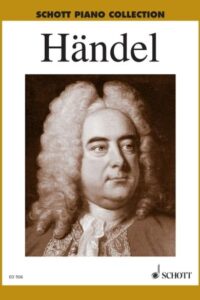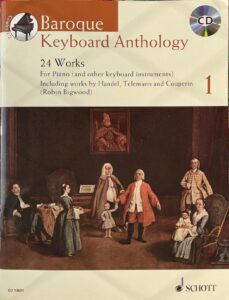Table of Contents
Handel Halvorsen Passacaglia Easy Piano Solo sheet music, Noten, partitura, spartiti, partition, 楽譜.
Best Sheet Music download from our Library.
We are in the musical baroque, a period to which Handel belongs, one of the greatest composers of all time. English German composer was one of the first composers that it is said that he began to favor the tastes of the public even above those of the nobles for whom he worked.

Please, subscribe to our Library.
If you are already a subscriber, please, check our NEW SCORES’ page every month for new sheet music. THANK YOU!
This characteristic earned him to be one of the most considered and recognized composers of his time. Especially when he composed music for official acts or for important events, his ability to communicate and connect with the public earned him the great reputation that he enjoyed in life.

But we will also listen to elements belonging to musical romanticism, since the work that Raúl and Eduardo will interpret is a subsequent review made by Johan Halvorsen on a piece of handle.

Johan Halvorsen was a composer, violinist, and director of the Norwegian orchestra of the nineteenth century, and is the author of the work that we will hear on this occasion: an adaptation for violin and cello of a passacaglia belonging to a Handel suite for Clavecín.

Passacaglia, or parade, is a musical piece based on variation.
Come join us now, and enjoy playing your beloved music and browse through great scores of every level and styles!
Can’t find the songbook you’re looking for? Please, email us at: sheetmusiclibrarypdf@gmail.com We’d like to help you!
What is the difference between a Passacaglia and a Chaconne?
passacaglia, (Italian, from Spanish passacalle, or pasacalle: “street song”), musical form of continuous variation in 3/4 time; and a courtly dance. The dance, as it first appeared in 17th-century Spain, was of unsavoury reputation and possibly quite fiery. In the French theatre of the 17th and 18th centuries it was a dance of imposing majesty. Little is known of the actual dance movements and steps. Musically the passacaglia is nearly indistinguishable from the contemporary chaconne; contemporary writers called the passacaglia a graver dance, however, and noted that it was identified more frequently with male dancers.
Examples of passacaglias include Bach’s famous Passacaglia and Fugue in C Minor, for organ (BWV 582); Aaron Copland’s Passacaglia for Piano (1921–22); the fourth movement of Dmitry Shostakovich’s Symphony No. 8, Opus 65 (1943); and the music of Act I, scene 4, of Alban Berg’s opera Wozzeck (1922). The dance’s original name survives in the pasacalle, a lively folk dance for couples popular in western South America.

chaconne, originally a fiery and suggestive dance that appeared in Spain about 1600 and eventually gave its name to a musical form. Miguel de Cervantes, Francisco Gómez de Quevedo, and other contemporary writers imply a Mexican origin. Apparently danced with castanets by a couple or by a woman alone, it soon spread to Italy, where it was considered disreputable as it had been in Spain. During the 17th century, a subdued version gained favour at the French court; it appeared frequently in the stage works of Jean-Baptiste Lully.
The musical form of the chaconne is a continuous variation, usually in triple metre and a major key; it is generally characterized by a short, repeating bass line or harmonic progression. The chaconne form, which is similar to that of the passacaglia, was used by composers in the Baroque period and later. In the 17th century, French composers often designated as chaconne pieces in rondeau form—i.e., with refrain (R) recurring before, after, and between contrasting passages or couplets (R A R B R C R, etc.). Johann Sebastian Bach’s “Chaconne” from the Partita in D Minor for unaccompanied violin is an example of masterly use of the chaconne as a variation form. François Couperin’s harpsichord music includes many chaconnes en rondeau, such as “La Favorite.” Later composers revived the form, including Johannes Brahms in the last movement of his Symphony No. 4 (1885) and Benjamin Britten in his String Quartet No. 2 (1945).
New Year’s Eve: “Chaconne vs. Passacaglia”
Chaconne from Partita No. 2 in D minor, BWV 1004 – Johann Sebastian Bach (1685-1750) arranged for solo piano (Arr. Ferruccio Busoni) Passacaglia from Handel’s Suite No. 7 in G minor – Johan Halvorsen (1864-1935) for violin and viola Ciaccona in C Major – Bernardo Storace (ca. 1637 – ca. 1707) Chaconne – Sofia Gubaidulina (b.1931) Passacaglia on an Old English Tune – Rebecca Clarke (1886-1979) Ciaccona in C major – Antonio Bertali (1605–1669)
Garth Newel Piano Quartet Francis Yun, harpsichord.
Browse in the Library:
Or browse in the categories menus & download the Library Catalog PDF:
